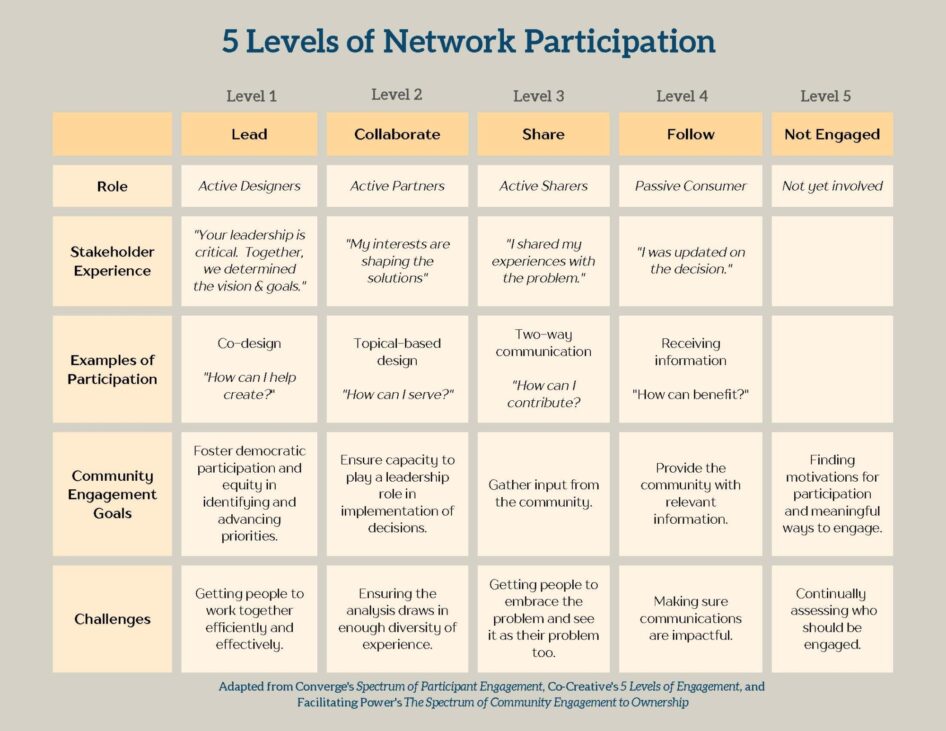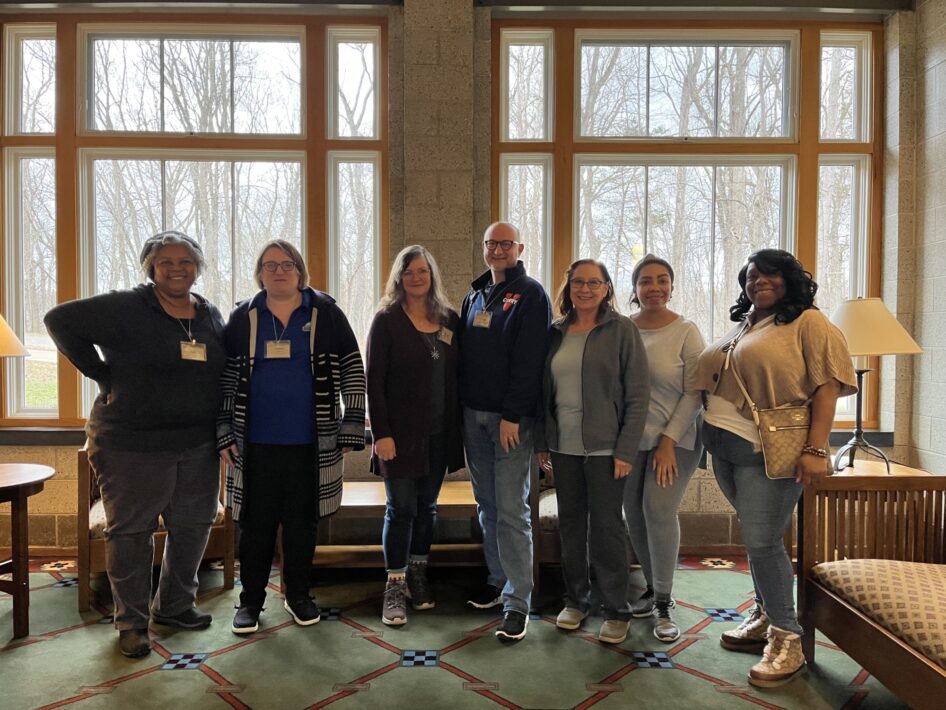The Power of Local Networks
Network Composition
Local networks, while not mandatory for ELPs, can be a great help in creating and implementing them. There is no “one-size-fits-all” answer to what a local environmental literacy network should look like, but most networks include people and organizations that are engaged to varying degrees. The Levels of Participation figure below suggests that people participate in networks in one of four ways: they lead, collaborate, share, or follow.

Leads are often called backbone, core, or design teams and they can also include a network coordinator. Leads generally co-create the network’s strategic direction and coordinate efforts of those who fall into the active collaborator circle. Leads also develop effective ways to facilitate information sharing and communication with those in the share and follow circles. The collaborators are the people and groups who actively partner, contributing and participating as their mission and capacity allows. Share and follow are more passive roles and often engage in fewer activities but are regularly observing and popping in as they are able and interested. These partners are especially important for bringing a wider and more diverse set of views, skills, and abilities. All of these roles are fluid, so people and organizations may move between them over time.
Example of a Local Network
California Environmental Literacy Initiative’s Community-Based Partner Network Toolkit provides additional examples of what types of organizations might be included in a network, what these organizations can offer to schools and districts, and the benefits of such networks.
Why Local Networks
Local networks can be an important part of your environmental literacy efforts because they leverage the strengths and resources of multiple partners to realize a shared vision for environmental literacy. Especially in large districts, these networks can provide space for key partners to collaborate in a way that ensures alignment and avoids redundancy. In small districts without a coordinator for environmental literacy, the network approach can increase capacity through more strategic collaborations.

Tips for Building a Local Network
There may already be some sort of network in your community that serves this purpose, or perhaps you are endeavoring to build one. Regardless, networks should consider the following six elements in the start-up or refocusing process (adapted from Co-Creative’s Network Design Framework):
Purpose. What is the network’s reason for being?
Participation. Who is involved in the network? What is required to be a part of the network? How many members should there be?
Governance. How are decisions made related to network priorities and action? What guides the network’s culture and membership?
Connections. How will the network share information, coordinate, and support collaborative action?
Resources. How is the network supported? Are financial resources needed?
Functions. What services are needed to best support the network’s purpose (e.g., assessment, policy, advocacy)? How will the network add value to its participants?
Environmental Literacy Champions can serve as catalysts for these teams or networks. They bring together the right people to begin to work through those six elements together.
Advancing Community in the Network
As you build your network, consider centering perspectives of those with a variety of lived experiences. They are often best suited to identify solutions that can work to engaged everyone within their own community.
Collective impact or other social change frameworks may be used by these networks to create direction, alignment, and commitment among the partners. There is no “correct” way to do this work; instead, school districts and their partners should be guided by the needs and capacities within their network.
